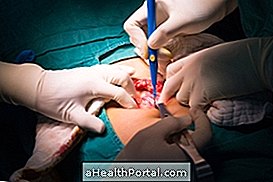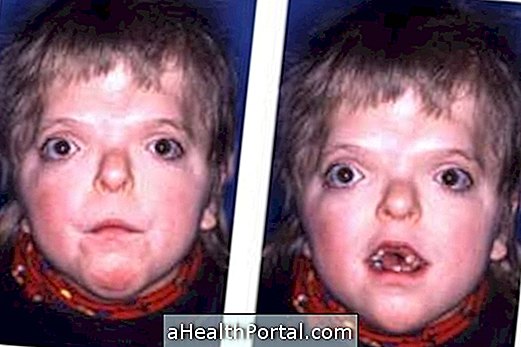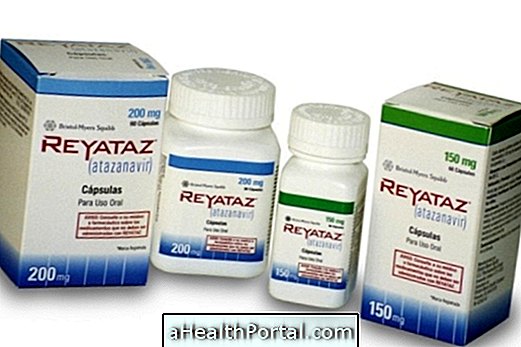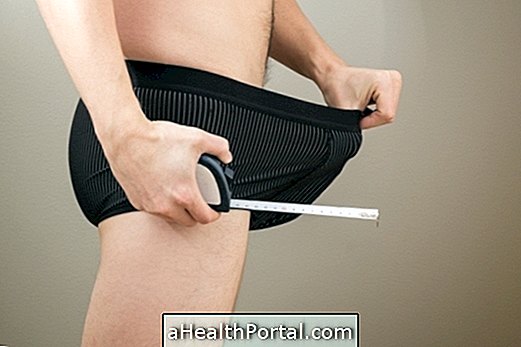Surgery to remove the gallbladder, technically called cholecystectomy, is indicated in cases of inflamed gallbladder, gallstones or, less frequently, in cases of cancer.
When it occurs in a programmed and uncomplicated way, it is usually a quick surgery, lasting on average 45 minutes, requiring only 1 to 2 days of rest and a recovery for normal activities in 1 to 2 weeks.


Surgery can be done in 2 ways:
- Conventional surgery, or with a cut, also known as open surgery: done through a larger cut in the abdomen, for removal of the gallbladder. Usually has a recovery a little more time, and leaves a scar more visible;
- Laparoscopy or video surgery, also known as laser surgery: it is done with 4 holes in the abdomen, where the doctor passes the material and a small camera to perform the surgery with less manipulation and fewer cuts, being a surgery of one faster recovery with less pain and less scarring.
Both surgeries are done with general anesthesia, and usually only 1 to 2 days of hospitalization are necessary. However, if the abdomen is very swollen, as in some complications of gallstones, such as cholangitis or pancreatitis, a longer recovery time may be necessary.
If it is necessary to stay more than 3 days in bed, the doctor may indicate that physical therapy is still performed in the hospital to ensure proper movement of the body and to prevent respiratory complications that may occur after any surgery. If the person needs to rest indoors these exercises can help: 5 exercises to breathe better after the surgery.
How is the postoperative
After anesthesia and analgesics have passed, a person may experience mild pain or discomfort in the region of the abdomen, which may also radiate to the shoulder or neck region. While the pain persists, the doctor will indicate the use of analgesics or anti-inflammatories, such as Diclofenac, Dipirone, or Ketoprofen, for example.
1. How much rest time is needed
After surgery for removal of the gallbladder, initial resting is indicated, but as soon as one can get up, after 1 to 2 days, it is possible to do small walks and activities without effort. Returning to work, as well as other daily activities such as driving or light exercise should only be started after 1 week in the case of laparoscopic surgery or after 2 weeks in the case of conventional surgery.
It is also important to avoid sitting or lying down for too long, so you should take small walks around the house throughout the day. However, each case may vary, so it is important to follow your doctor's advice.
2. How is the food
In the first days, a liquid or pasty diet is indicated and be careful not to move excessively, thus guaranteeing the good cicatrization of the surgical wound. Then, the food will become normal, but it is recommended that it be low in fat, so the patient should avoid ingesting sausages or fried foods, for example. Here's how to make a more doughy diet for the first few days.
To learn more about what you can and can not eat watch:

The surgery to remove the gallbladder has no relation to weight loss, so although the person can lose weight, it is due to the diet low in fat that should do after surgery. With the removal of the gallbladder, the bile that is produced in the liver will continue to be produced, but instead of being stored in the gallbladder, goes to the intestine to eliminate fat from food and not body fat.
Possible risks of surgery
The risks of gallbladder surgery are minimal, however the most serious are bleeding or infection that can occur in any surgical intervention.
Therefore, it is advisable to go to the emergency room immediately if a fever of more than 38 ° C appears, if the operative wound has pus, if the skin and eyes become yellow, or if there is shortness of breath, vomiting or pain that does not improve with the medicine.
See when surgery is used to treat cancer in: Treatment for gallbladder cancer.

























